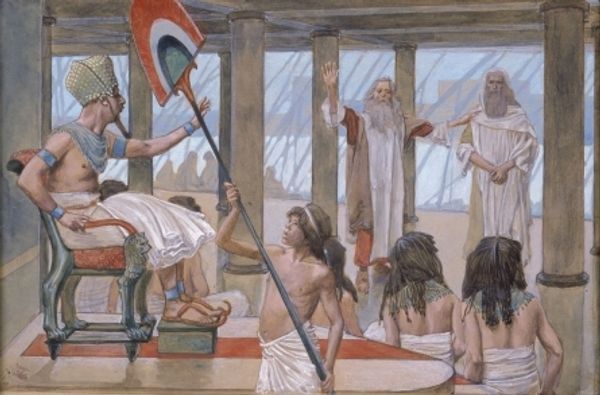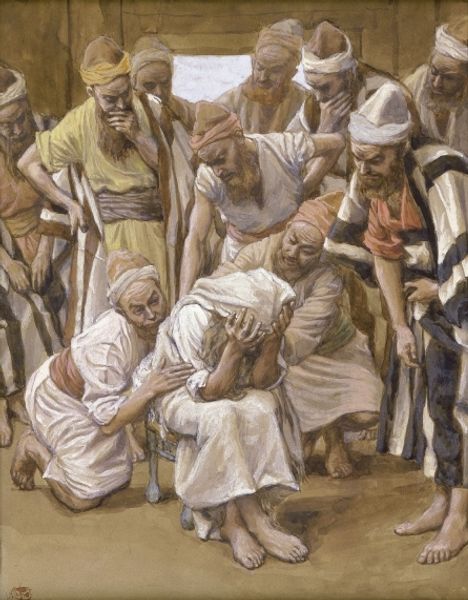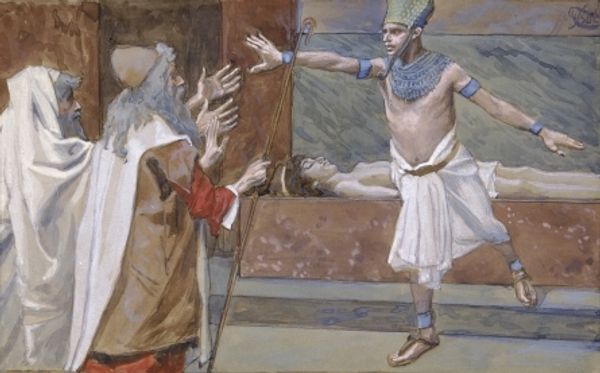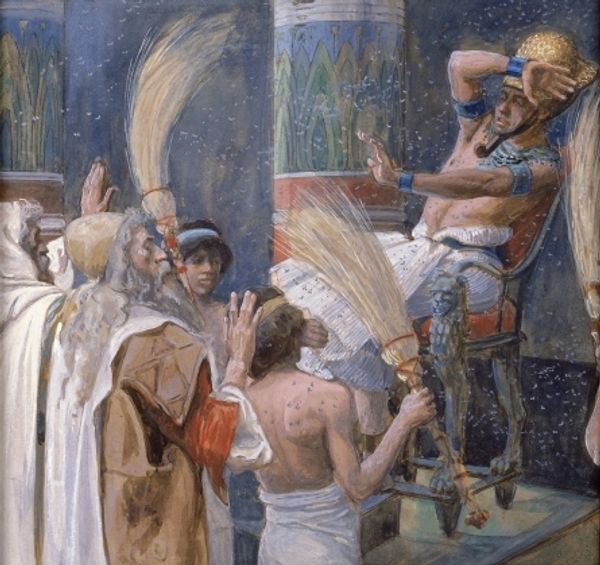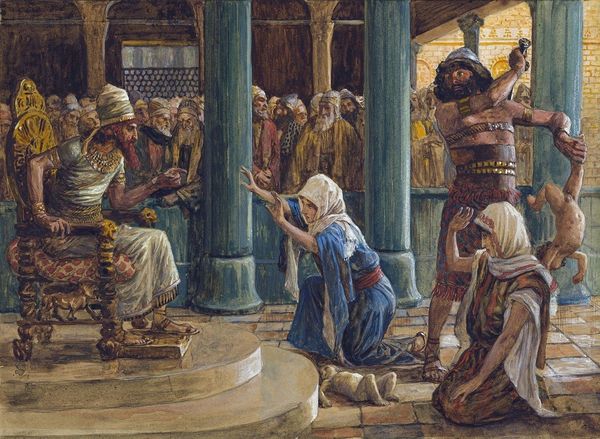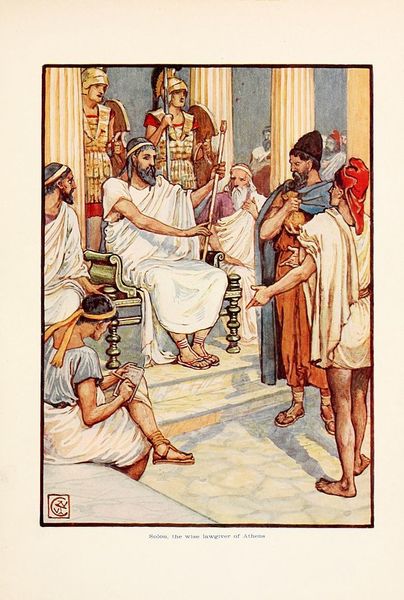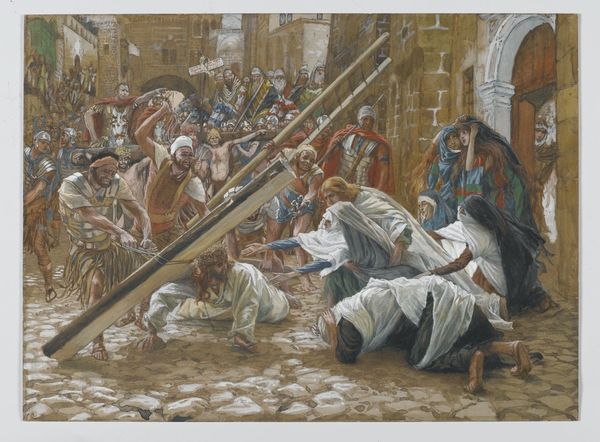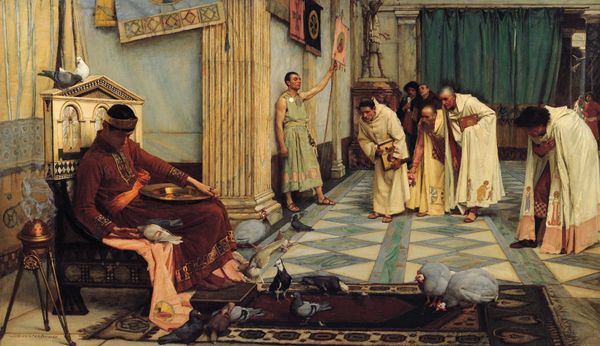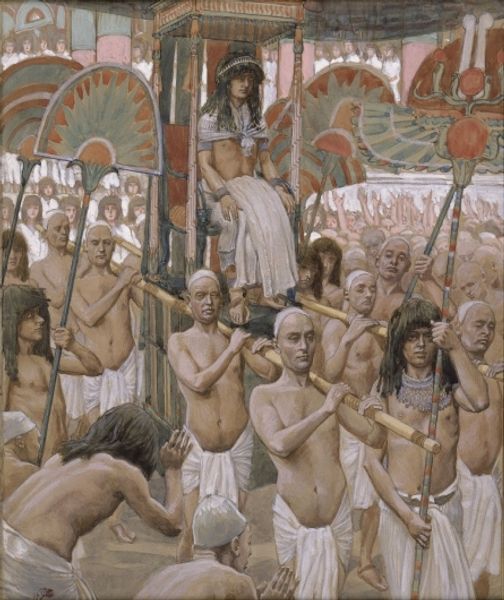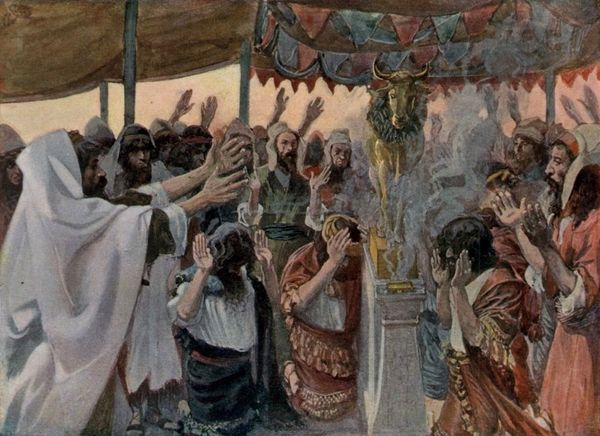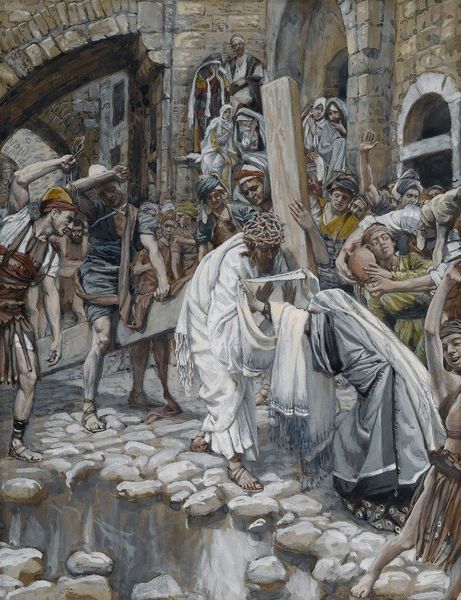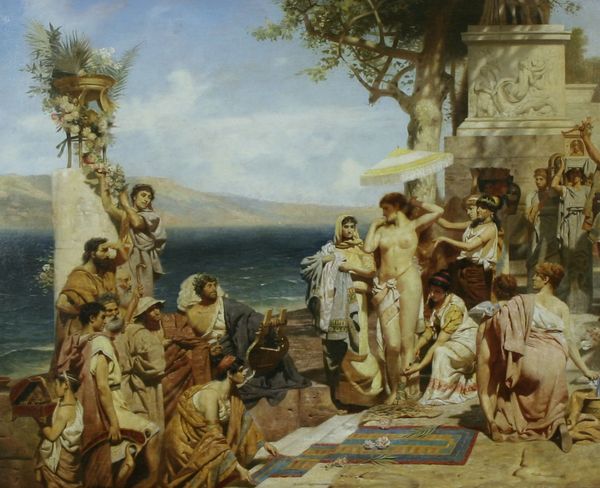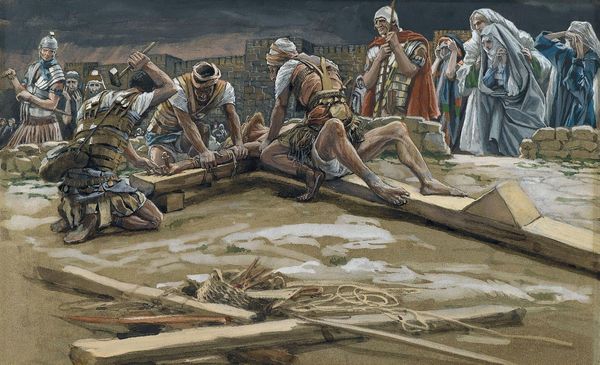
painting, oil-paint
#
narrative-art
#
painting
#
prophet
#
oil-paint
#
painted
#
oil painting
#
orientalism
#
men
#
painting painterly
#
history-painting
#
academic-art
#
portrait art
Copyright: Public domain
Curator: Ah, look at this painting; "The Rod of Aaron Devours the Other Rods", painted by James Tissot around 1902. It’s an oil painting depicting a scene from the Book of Exodus. What's your initial take? Editor: First impression? It's all happening! There's something wonderfully chaotic and biblical about the writhing shapes at the characters’ feet; a sort of serpentine pasta gone rogue. Visually compelling but a bit unsettling. Curator: Absolutely, the painting style reflects Tissot's interest in depicting Biblical scenes with an orientalist sensibility. The architecture and the figures' garments show that. The subject refers to a trial of power where Aaron’s rod, through divine intervention, swallows the rods of the Egyptian sorcerers. The rods have been turned into snakes. Editor: Snakes as a sign of power... It’s interesting how Tissot captures this almost theatrical tension. Pharaoh looks intrigued, skeptical even. I’m also caught by the expressions; some seem worried, some are trying to hide it and play it cool… It's all very human. It makes the historical weight accessible. Curator: Definitely, Tissot intended to present Biblical narratives as vivid historical events. He used contemporary archaeological and textual research to create authenticity. It’s part of the academic art tradition that valued historical accuracy and moral lessons. It says a lot about what 19th century French society valued! Editor: Yet, it escapes pure illustration; there is real dramatic interpretation here, more than factual depiction. The rods-turned-snakes, or shall we say pasta-gone-wrong, do add a fantastic surreal quality, don't they? What do you think this contributed to how the artist’s message would be viewed at that time? Curator: I believe it aimed to capture viewers by sparking interest and reflection on timeless themes through a modern interpretation. These biblical artworks provided a source for social commentary on contemporary religious discourse. Editor: I see it also provides the audience an accessible sense of personal spirituality when engaging with the visual storytelling; in that, perhaps there is also something really universal about it. Curator: Absolutely, it invites consideration. I think there are a lot of historical references worth exploring in more detail if we only had more time. Editor: Well, hopefully we gave a good taste of this beautiful dramatic painting to invite our audience to investigate it further. It is up for us to find something in the artwork, just as much as it is for the artist.
Comments
No comments
Be the first to comment and join the conversation on the ultimate creative platform.
